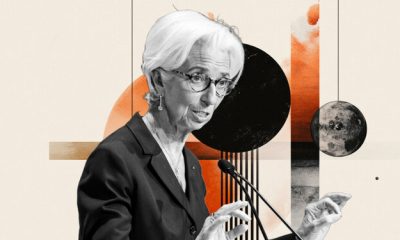

others
US Dollar struggles to gather traction on quiet Monday – Crypto News
- The DXY remains stuck around 106.00, looking for direction on Presidents’ Day.
- Fed funds futures price in 50 basis points of rate cuts for 2025 after weak Retail Sales data.
- Traders are eyeing global February PMI readings on Friday for potential divergence signals.
- US tariff concerns persist with auto levies expected to begin on April 2.
The US Dollar Index (DXY), which tracks the US Dollar’s performance against six major currencies, trades flat on Monday as traders monitor new geopolitical developments. With ongoing talks in Riyadh regarding a Ukraine-Russia peace deal, markets are assessing potential outcomes and their impact on risk sentiment. At the time of writing, the DXY remains stuck above the 106.00 range with investors awaiting key economic data later this week.
Daily digest market movers: US Dollar remains range-bound as markets digest mixed signals
- The US Dollar hovers near last week’s low with no clear directional momentum.
- Fed funds futures now price in 50 basis points of rate cuts for 2025 following weak US January Retail Sales data.
- Despite the Retail Sales miss, consumer spending remains supported by real wage growth, a solid labor market, and strong household balance sheets.
- Traders may not see much USD relief until Friday when global February PMI data could highlight divergence among economies.
- Philadelphia Fed President Patrick Harker, Fed Governor Michelle Bowman, and Fed Governor Christopher Waller will speak on Monday.
- Last Friday, Fed President Lorie Logan cautioned that lower inflation does not automatically warrant further rate cuts.
- Markets continue to shrug off tariff concerns despite US President Donald Trump confirming auto levies will begin on April 2.
- Country-by-country reciprocal tariffs are also set to take effect around the same time, though implementation may be gradual.
DXY technical outlook: Key support in focus as bearish pressure builds
The US Dollar Index struggles to maintain momentum after losing the 20-day Simple Moving Average (SMA), reinforcing a bearish outlook. The Relative Strength Index (RSI) remains in negative territory, confirming weakening momentum, while the Moving Average Convergence Divergence (MACD) suggests a steady bearish trend.
Immediate support is seen at the 100-day SMA near 106.30 with a break below this level likely to confirm a negative short-term outlook. Resistance remains at 106.80, followed by the 20-day SMA at 107.20.
Fed FAQs
Monetary policy in the US is shaped by the Federal Reserve (Fed). The Fed has two mandates: to achieve price stability and foster full employment. Its primary tool to achieve these goals is by adjusting interest rates. When prices are rising too quickly and inflation is above the Fed’s 2% target, it raises interest rates, increasing borrowing costs throughout the economy. This results in a stronger US Dollar (USD) as it makes the US a more attractive place for international investors to park their money. When inflation falls below 2% or the Unemployment Rate is too high, the Fed may lower interest rates to encourage borrowing, which weighs on the Greenback.
The Federal Reserve (Fed) holds eight policy meetings a year, where the Federal Open Market Committee (FOMC) assesses economic conditions and makes monetary policy decisions. The FOMC is attended by twelve Fed officials – the seven members of the Board of Governors, the president of the Federal Reserve Bank of New York, and four of the remaining eleven regional Reserve Bank presidents, who serve one-year terms on a rotating basis.
In extreme situations, the Federal Reserve may resort to a policy named Quantitative Easing (QE). QE is the process by which the Fed substantially increases the flow of credit in a stuck financial system. It is a non-standard policy measure used during crises or when inflation is extremely low. It was the Fed’s weapon of choice during the Great Financial Crisis in 2008. It involves the Fed printing more Dollars and using them to buy high grade bonds from financial institutions. QE usually weakens the US Dollar.
Quantitative tightening (QT) is the reverse process of QE, whereby the Federal Reserve stops buying bonds from financial institutions and does not reinvest the principal from the bonds it holds maturing, to purchase new bonds. It is usually positive for the value of the US Dollar.
-

 Blockchain1 week ago
Blockchain1 week agoRipple and Ctrl Alt Team to Support Real Estate Tokenization – Crypto News
-
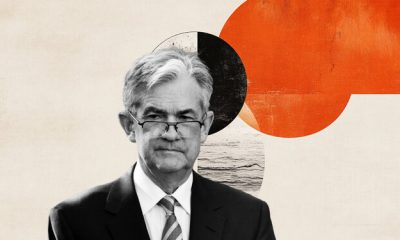
 others1 week ago
others1 week agoEUR/USD recovers with trade talks and Fed independence in focus – Crypto News
-
Technology1 week ago
Fed Rate Cut Odds Surge As Powell’s Future Hangs In The Balance – Crypto News
-

 Cryptocurrency1 week ago
Cryptocurrency1 week agoIt’s a Statement, Says Bitfinex Alpha – Crypto News
-

 Metaverse1 week ago
Metaverse1 week agoWhy voice is emerging as India’s next frontier for AI interaction – Crypto News
-
Technology1 week ago
Fed Rate Cut Odds Surge As Powell’s Future Hangs In The Balance – Crypto News
-
Business1 week ago
XLM Is More Bullish Than ETH, SOL, And XRP, Peter Brandt Declares – Crypto News
-

 Cryptocurrency1 week ago
Cryptocurrency1 week agoAnarchy, crime and stablecoins – Blockworks – Crypto News
-

 Blockchain4 days ago
Blockchain4 days agoInstitutional Demand Surges As Ethereum Sets New Inflow Records – Crypto News
-

 others1 week ago
others1 week agoTop Crypto Exchange by Trading Volume Binance Announces Airdrop for New Ethereum (ETH) Ecosystem Altcoin – Crypto News
-

 Cryptocurrency1 week ago
Cryptocurrency1 week agoBitcoin trades near $119K after new all-time high; Coinbase rebrands wallet to ‘Base App’ – Crypto News
-
Technology6 days ago
“Decentralized Ponzi Scheme”- Gold Bug Peter Schiff Slams Landmark Crypto Bills – Crypto News
-

 Cryptocurrency5 days ago
Cryptocurrency5 days agoAltseason heats up, but Bitcoin could face short-term pullback – How? – Crypto News
-

 Cryptocurrency1 week ago
Cryptocurrency1 week ago1inch price forecast: 1INCH hits 7-month high after double digit gains – Crypto News
-

 Cryptocurrency1 week ago
Cryptocurrency1 week ago1inch price forecast: 1INCH hits 7-month high after double digit gains – Crypto News
-
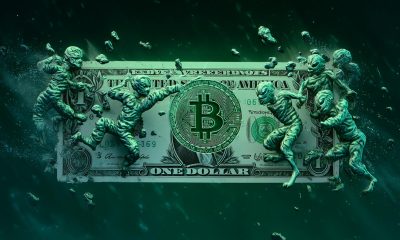
 others1 week ago
others1 week agoVanEck Details Key Drivers Boosting Bitcoin Price, Including Corporate Treasury Demand, ETF Flows and More – Crypto News
-
Business1 week ago
XRP Lawsuit Update: Ripple Paid $125M in Cash, Settlement Hinges on Appeal – Crypto News
-

 De-fi1 week ago
De-fi1 week agoBNB Chain Teases New Blockchain with Privacy Features to Compete With Crypto Exchanges – Crypto News
-
Technology7 days ago
Breaking: GENIUS Act Becomes First Major Crypto Legislation as Trump Signs Bill – Crypto News
-

 Cryptocurrency6 days ago
Cryptocurrency6 days agoCalifornia Sheriffs Believe 74-Year-Old’s Disappearance Linked to Son’s Crypto Fortune – Crypto News
-

 Cryptocurrency6 days ago
Cryptocurrency6 days agoShytoshi Kusama Breaks Silence on New SHIB AI Whitepaper and Transformed Future – Crypto News
-
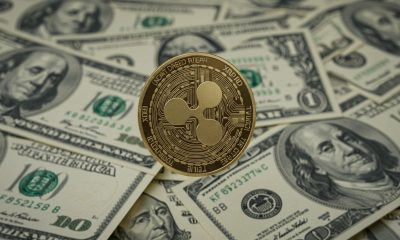
 Cryptocurrency4 days ago
Cryptocurrency4 days agoXRP Price Hits All-Time High at $3.66 — Can It Smash Through $4 After Trump Win & SEC Shake-Up? – Crypto News
-
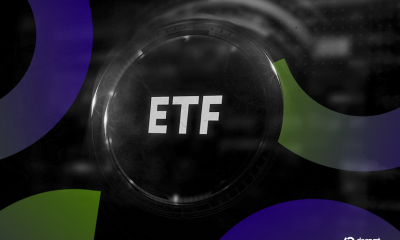
 Cryptocurrency1 week ago
Cryptocurrency1 week agoHypercharged Exposure to XRP and Solana Now Available With These Two ETFs – Crypto News
-

 Blockchain1 week ago
Blockchain1 week agoBitMine Shares Rallied After Peter Thiel Investment. – Crypto News
-

 others1 week ago
others1 week agoScammer Drains $10,000,000 From IRS in International Tax Fraud and Identity Theft Scheme: DOJ – Crypto News
-
Business1 week ago
XRP ETF Still in Play- SEC Commissioner Debunks Rejection Speculations – Crypto News
-
Business1 week ago
Ethereum Price Prediction- Bulls Target $3,700 As ETH Treasury Accumulation Soars – Crypto News
-
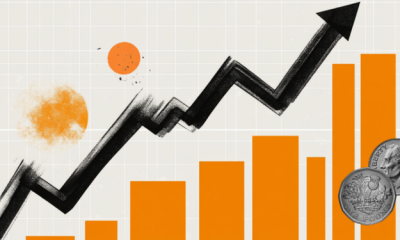
 others1 week ago
others1 week agoGBP/USD rallies on US PPI dip and Trump’s potential Powell removal – Crypto News
-

 others1 week ago
others1 week agoGBP/USD rallies on US PPI dip and Trump’s potential Powell removal – Crypto News
-
Cryptocurrency1 week ago
Russia’s $85 Billion Sberbank to Launch Crypto Custody Services – Crypto News
-
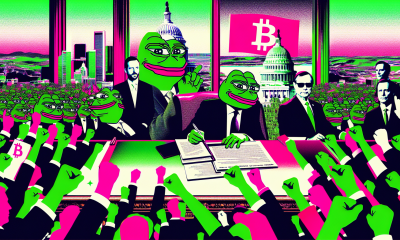
 De-fi1 week ago
De-fi1 week agoU.S. House Passes Clarity, GENIUS, and Anti-CBDC Acts With Historic Bipartisan Support for Crypto – Crypto News
-

 Cryptocurrency7 days ago
Cryptocurrency7 days agoXRP Price Spikes to Record Highs As Momentum Signals Extended Gains – Crypto News
-

 Blockchain7 days ago
Blockchain7 days agoWhy Bitcoin self-custody is declining in the ETF era – Crypto News
-

 Cryptocurrency7 days ago
Cryptocurrency7 days agoUS House passes three key crypto bills; market reaction muted as Bitcoin dips – Crypto News
-

 De-fi6 days ago
De-fi6 days agoCrypto Market Cap Hits $4 Trillion Milestone as US House Passes Landmark Bills – Crypto News
-

 De-fi6 days ago
De-fi6 days agoCrypto Market Cap Hits $4 Trillion Milestone as US House Passes Landmark Bills – Crypto News
-
others5 days ago
Why Is The Crypto Market Rising Today? – Crypto News
-

 Cryptocurrency5 days ago
Cryptocurrency5 days agoSanctum acquires Ironforge, plots transaction infrastructure vertical – Crypto News
-

 Blockchain4 days ago
Blockchain4 days agoHow to Use Google Gemini to Turn Crypto News Into Trade Signals – Crypto News
-

 Blockchain3 days ago
Blockchain3 days agoXRP Could Skyrocket 500% Against Bitcoin, Analyst Warns – Crypto News
-

 Cryptocurrency1 week ago
Cryptocurrency1 week agoExclusive: Bitwise to roll out daily attestations for bitcoin ETFs – Crypto News
-

 Metaverse1 week ago
Metaverse1 week agoBroadcom challenges Nvidia’s AI dominance with ultra-connected Tomahawk networking chip launch – Crypto News
-

 De-fi1 week ago
De-fi1 week agoSolana RWA Growth Outpaces Ethereum in 2025 – Crypto News
-
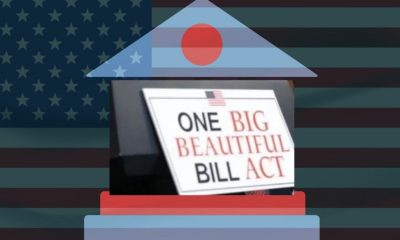
 Cryptocurrency1 week ago
Cryptocurrency1 week agoNothing Burger or Crypto Catalyst? – Crypto News
-

 Metaverse1 week ago
Metaverse1 week agoNvidia’s Jensen Huang says AI ‘fundamental like electricity’, praises Chinese models as ‘catalyst for global progress’ – Crypto News
-
Business1 week ago
$800 Billion JPMorgan To Rival Tether, Circle, and Ripple In Stablecoin Race – Crypto News
-

 Cryptocurrency1 week ago
Cryptocurrency1 week ago300% Bitcoin (BTC) Skyrocketing, Ethereum (ETH) Below $3,000 Again, Was Shiba Inu (SHIB) Dump Controlled? – Crypto News
-

 De-fi1 week ago
De-fi1 week agoTAC Token Rallies 50% as TON Application Chain Launches to Bring DeFi Back to Telegram – Crypto News
-
others1 week ago
Crypto Exchange Hack: BigONE Users Lose A Massive $27 Million In Recent Exploit – Crypto News
-
Cryptocurrency1 week ago
Pi Network Activity Soars as Mystery Wallet Acquires Millions in PI Coins – Crypto News

